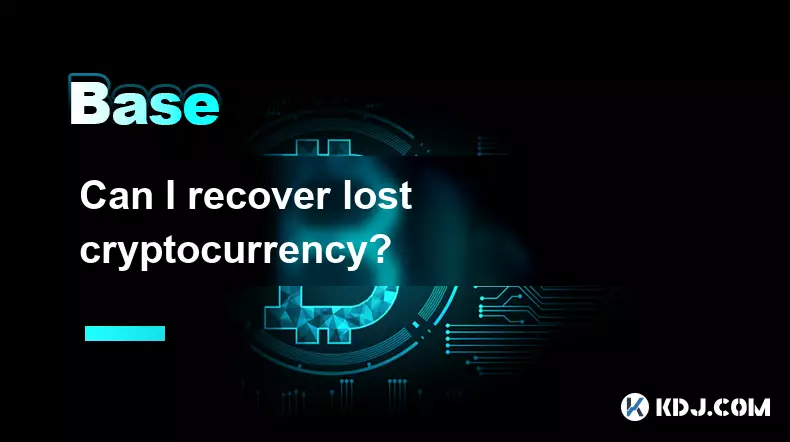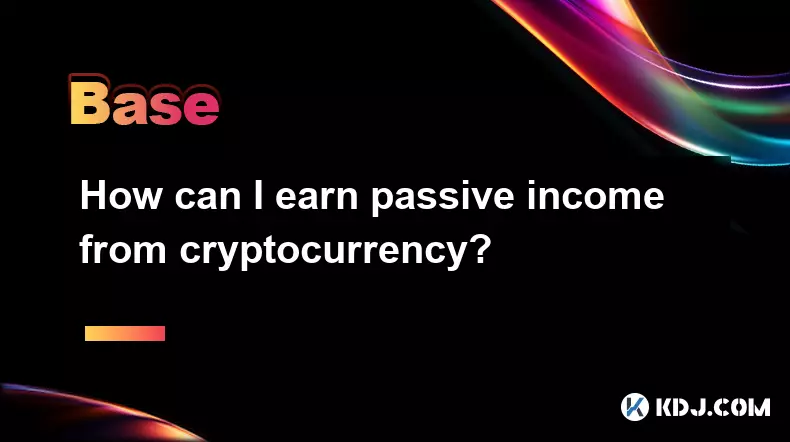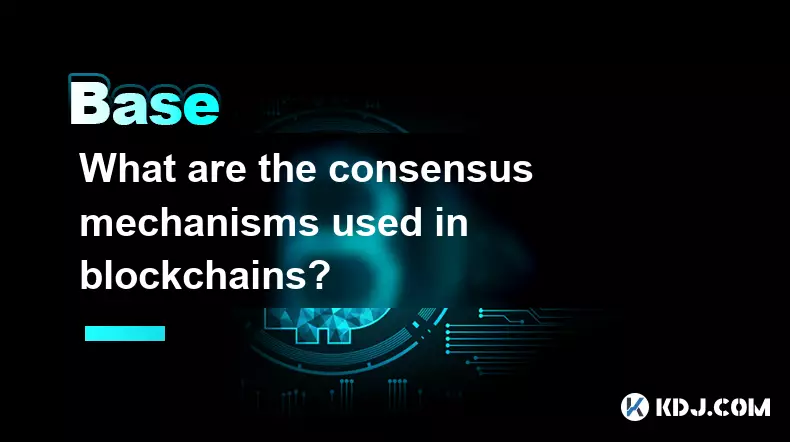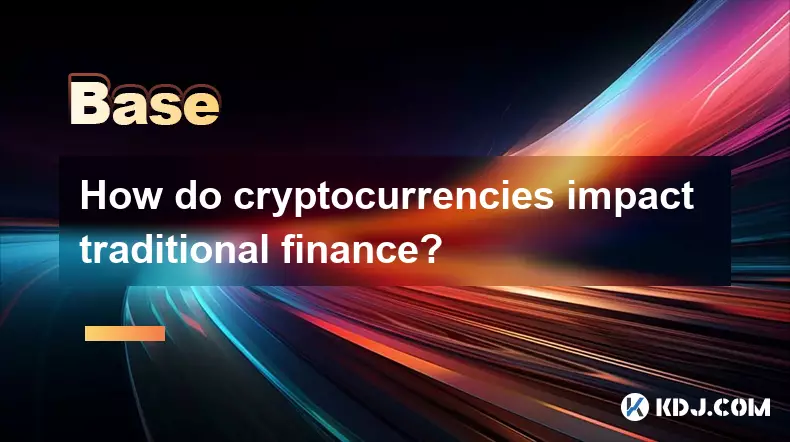-
 bitcoin
bitcoin $109667.069529 USD
-3.03% -
 ethereum
ethereum $3936.685804 USD
-4.07% -
 tether
tether $1.000493 USD
0.01% -
 xrp
xrp $2.771823 USD
-4.74% -
 bnb
bnb $957.805027 USD
-5.34% -
 solana
solana $196.735100 USD
-6.68% -
 usd-coin
usd-coin $0.999727 USD
-0.01% -
 dogecoin
dogecoin $0.227355 USD
-5.12% -
 tron
tron $0.335205 USD
-0.81% -
 cardano
cardano $0.779256 USD
-3.59% -
 ethena-usde
ethena-usde $0.999900 USD
-0.06% -
 hyperliquid
hyperliquid $42.492095 USD
-6.61% -
 chainlink
chainlink $20.501853 USD
-4.34% -
 avalanche
avalanche $28.952606 USD
-11.21% -
 stellar
stellar $0.356038 USD
-3.93%
What are the fundamental concepts of Web3?
Web3 empowers users with ownership, autonomy, and direct value creation through decentralized networks, blockchain, and cryptographic security.
Sep 19, 2025 at 04:18 pm

Fundamental Concepts of Web3
1. Decentralization is at the core of Web3, shifting control from centralized entities like corporations to distributed networks powered by blockchain technology. Users own their data and digital assets without relying on intermediaries.
2. Blockchain serves as the foundational layer for Web3, providing a transparent, immutable ledger where transactions and smart contracts are recorded. This ensures trust through cryptographic verification rather than institutional authority.
3. Cryptographic ownership enables individuals to prove possession of digital items using private keys. This principle underpins digital identity, NFTs, and wallet-based access across decentralized applications.
4. Smart contracts automate agreements and processes without third-party enforcement. These self-executing codes run on blockchains and enable complex interactions such as DeFi lending, token swaps, and DAO governance.
5. Interoperability allows different blockchain networks and dApps to communicate and share data seamlessly. Standards like ERC-20 and cross-chain bridges enhance connectivity across ecosystems.
User Sovereignty in Web3
1. Digital autonomy means users have full control over their online identities and assets. Unlike traditional platforms that lock data behind proprietary systems, Web3 empowers individuals with portable wallets and logins.
2. Permissionless participation enables anyone with an internet connection to interact with decentralized protocols. There are no gatekeepers deciding who can transact or build on the network.
3. Censorship resistance ensures that once data or transactions are validated on-chain, they cannot be altered or removed by any single entity. This protects freedom of expression and financial activity.
4. Data portability allows users to move their profiles, reputations, and assets across platforms without friction. A user’s history in one dApp can inform trust mechanisms in another.
5. Users earn value directly through participation, whether by staking tokens, providing liquidity, or contributing content—reversing the extractive model of Web2 platforms.
Economic Models in Web3
1. Tokenomics defines how cryptocurrencies are distributed, incentivized, and utilized within ecosystems. Well-designed models align long-term behavior between developers, investors, and users.
2. Governance tokens grant holders voting rights on protocol upgrades and treasury allocations. This democratic approach shifts decision-making power from closed teams to community stakeholders.
3. Incentive structures reward early adopters and active participants, fueling network effects. Mining, staking rewards, and yield farming drive engagement while securing the network.
4. Decentralized finance (DeFi) eliminates traditional financial intermediaries by offering lending, borrowing, and trading through code-based protocols accessible globally.
5. Play-to-earn and creator economies allow individuals to monetize time, skills, and creativity directly. Gamers earn tokens through gameplay; artists receive royalties via NFT sales.
Challenges Facing Web3 Adoption
1. Scalability remains a critical bottleneck, as many blockchains struggle with high fees and slow transaction speeds during peak usage. Layer 2 solutions and alternative consensus mechanisms aim to address this.
2. User experience barriers persist due to complex key management, wallet setup, and unintuitive interfaces. Mainstream adoption requires simplifying these interactions without compromising security.
3. Regulatory uncertainty affects innovation, as governments grapple with classifying tokens and overseeing decentralized entities. Compliance frameworks must evolve to accommodate new organizational forms.
4. Security risks include smart contract vulnerabilities, phishing attacks, and loss of private keys. Education and improved tooling are essential to protect users in self-custodial environments.
5. Network fragmentation occurs when too many competing chains and standards create silos. Efforts toward universal naming systems and cross-chain communication seek to unify the ecosystem.
Frequently Asked Questions
What is a DAO in Web3? A DAO (Decentralized Autonomous Organization) is a member-owned group governed by smart contracts. It operates without central leadership, allowing token holders to propose and vote on decisions collectively.
How do NFTs function within Web3? NFTs (Non-Fungible Tokens) represent unique digital assets verified on a blockchain. They enable verifiable ownership of digital art, collectibles, virtual real estate, and more, often tied to specific utility or access rights.
What role does a crypto wallet play in Web3? A crypto wallet stores private keys and interacts with blockchains. It acts as a user's identity and gateway to dApps, enabling authentication, transaction signing, and asset management.
Can Web3 work without cryptocurrency? Most current Web3 implementations rely on crypto for incentives, security, and value transfer. While theoretical alternatives exist, tokens remain integral to economic alignment and network sustainability.
Disclaimer:info@kdj.com
The information provided is not trading advice. kdj.com does not assume any responsibility for any investments made based on the information provided in this article. Cryptocurrencies are highly volatile and it is highly recommended that you invest with caution after thorough research!
If you believe that the content used on this website infringes your copyright, please contact us immediately (info@kdj.com) and we will delete it promptly.
- BlockDAG's Miner Rollout: A Global Expansion Story
- 2025-09-26 14:45:12
- XPL Surge: Is It a Dead Cat Bounce or the Real Deal?
- 2025-09-26 14:45:12
- XRP, Axelar, and Interchain Transfers: A New Era for DeFi?
- 2025-09-26 14:25:13
- Epstein Files, Antonio Brown, and Trump: A Wild Intersection
- 2025-09-26 14:25:13
- Tech-Savvy Parents Face Unexpected Challenges: A Guide to Childproofing the Digital Age
- 2025-09-26 14:30:01
- Riding the XRP Wave: Debt Tokenization and the Next Bull Cycle
- 2025-09-26 14:30:01
Related knowledge

Can I recover lost cryptocurrency?
Sep 25,2025 at 08:18am
Understanding the Nature of Cryptocurrency Loss1. Cryptocurrency operates on decentralized networks, meaning there is no central authority to reverse ...

How can I earn passive income from cryptocurrency?
Sep 23,2025 at 10:18am
Staking Cryptocurrencies for Regular Returns1. Many blockchain networks operate on a proof-of-stake (PoS) consensus mechanism, allowing users to earn ...

What are gas fees in cryptocurrency transactions?
Sep 26,2025 at 02:00am
Understanding Gas Fees in Blockchain Transactions1. Gas fees are payments made by users to compensate for the computing energy required to process and...

What are the consensus mechanisms used in blockchains?
Sep 24,2025 at 10:00am
Proof of Work and Its Role in Blockchain Security1. Proof of Work (PoW) is one of the earliest consensus mechanisms, first implemented by Bitcoin. Min...

How do cryptocurrencies impact traditional finance?
Sep 26,2025 at 05:54am
Disruption of Centralized Banking Systems1. Cryptocurrencies challenge the authority of central banks by offering decentralized alternatives to fiat c...

Is there a finite supply of Bitcoin?
Sep 23,2025 at 06:00am
Bitcoin's Fixed Supply Mechanism1. Bitcoin was designed with a hard cap of 21 million coins, making its supply finite and predictable. This limit is h...

Can I recover lost cryptocurrency?
Sep 25,2025 at 08:18am
Understanding the Nature of Cryptocurrency Loss1. Cryptocurrency operates on decentralized networks, meaning there is no central authority to reverse ...

How can I earn passive income from cryptocurrency?
Sep 23,2025 at 10:18am
Staking Cryptocurrencies for Regular Returns1. Many blockchain networks operate on a proof-of-stake (PoS) consensus mechanism, allowing users to earn ...

What are gas fees in cryptocurrency transactions?
Sep 26,2025 at 02:00am
Understanding Gas Fees in Blockchain Transactions1. Gas fees are payments made by users to compensate for the computing energy required to process and...

What are the consensus mechanisms used in blockchains?
Sep 24,2025 at 10:00am
Proof of Work and Its Role in Blockchain Security1. Proof of Work (PoW) is one of the earliest consensus mechanisms, first implemented by Bitcoin. Min...

How do cryptocurrencies impact traditional finance?
Sep 26,2025 at 05:54am
Disruption of Centralized Banking Systems1. Cryptocurrencies challenge the authority of central banks by offering decentralized alternatives to fiat c...

Is there a finite supply of Bitcoin?
Sep 23,2025 at 06:00am
Bitcoin's Fixed Supply Mechanism1. Bitcoin was designed with a hard cap of 21 million coins, making its supply finite and predictable. This limit is h...
See all articles










































































